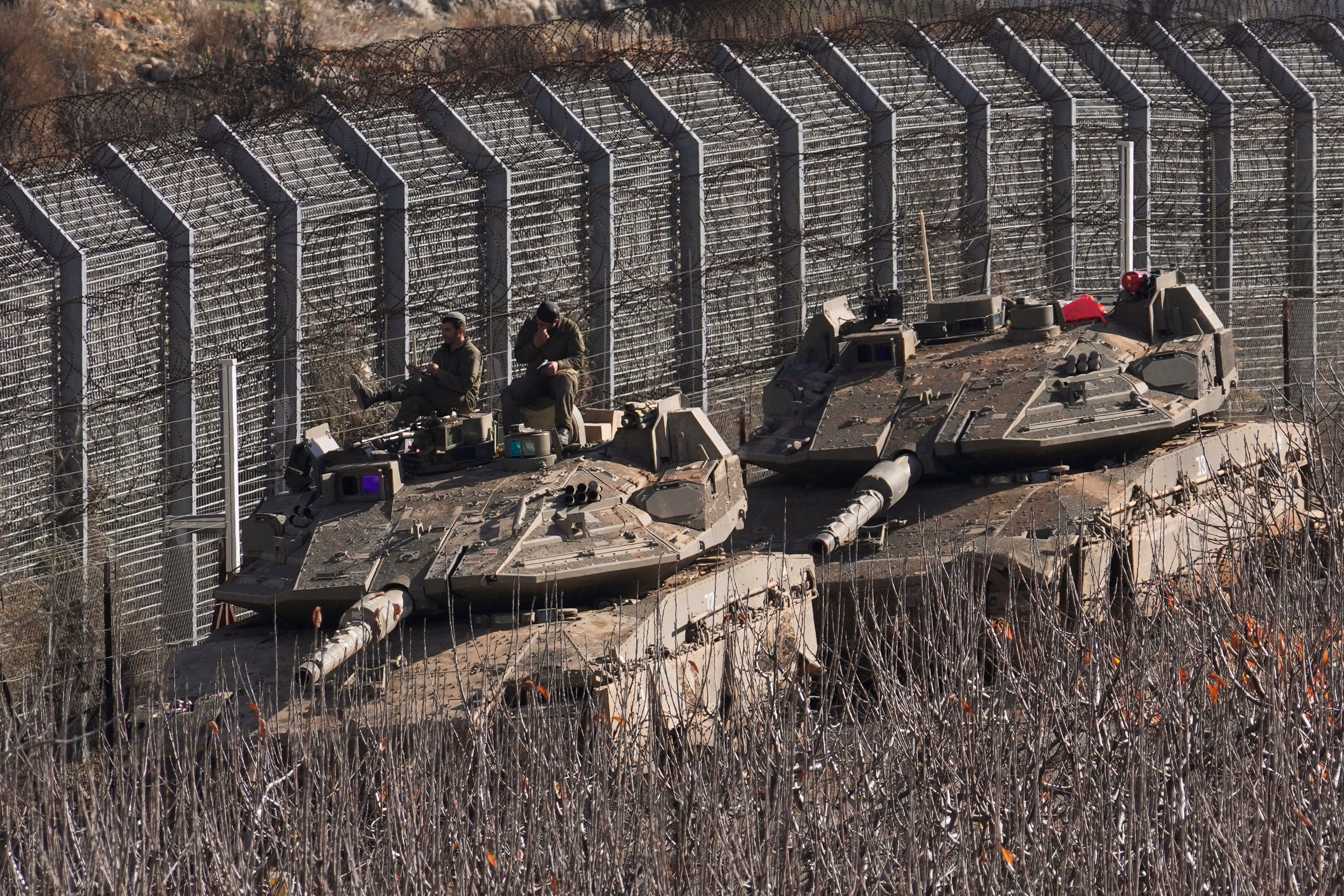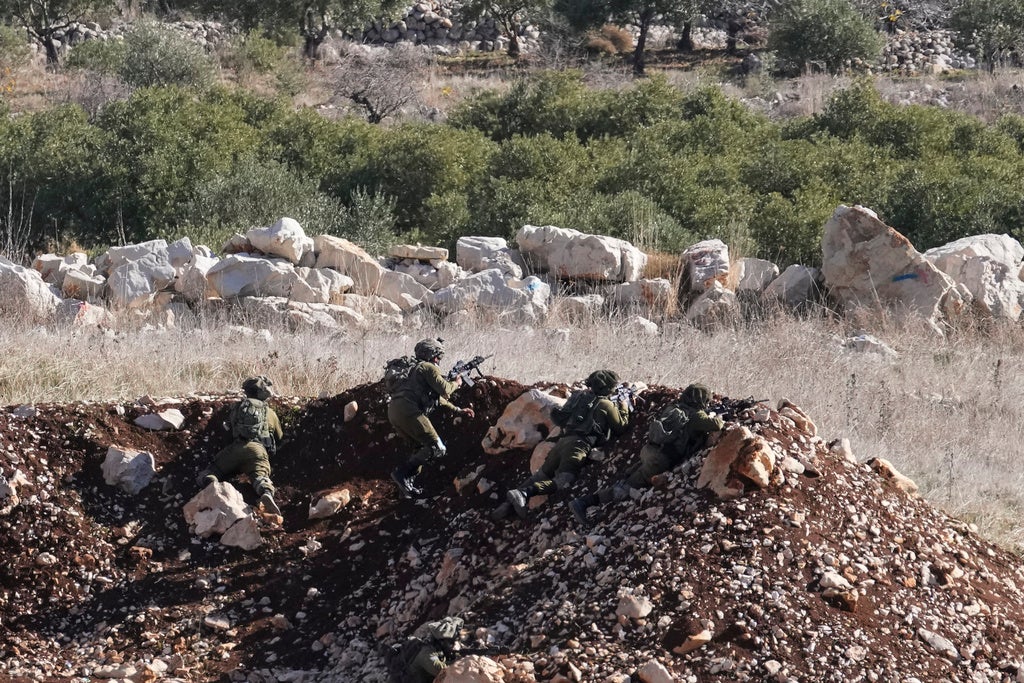What is the Golan Heights and why is the territory so important to Israel and Syria?
Israel entered the buffer zone in the Golan Heights hours after Bashar al-Assad’s Syrian regime crumbled

Your support helps us to tell the story
From reproductive rights to climate change to Big Tech, The Independent is on the ground when the story is developing. Whether it's investigating the financials of Elon Musk's pro-Trump PAC or producing our latest documentary, 'The A Word', which shines a light on the American women fighting for reproductive rights, we know how important it is to parse out the facts from the messaging.
At such a critical moment in US history, we need reporters on the ground. Your donation allows us to keep sending journalists to speak to both sides of the story.
The Independent is trusted by Americans across the entire political spectrum. And unlike many other quality news outlets, we choose not to lock Americans out of our reporting and analysis with paywalls. We believe quality journalism should be available to everyone, paid for by those who can afford it.
Your support makes all the difference.The Golan Heights, situated in the southwest corner of Syria and bordering Israel, Lebanon and Jordan, is a 1,000 square mile rocky plateau around 40 miles (60 kilometres) from Damascus, although it possesses a significance far beyond that and has been a political flashpoint for decades.
Israeli has occupied the Golan Heights since the 1980s and now its troops have seized the demilitarised buffer zone, in response to the fall of Bashar al-Assad’s brutal dictatorship in Syria.
Troops have also been deployed beyond the demilitarised buffer zone and into Syrian territory, with Israeli defence minister Israel Katz saying Israeli forces had been ordered to create a “sterile defence zone” in southern Syria, adding that they would not retain a permanent presence. Israel had previously described reports from Syrian sources that it had breached the buffer zone as “false”.
Speaking at a press conference in Jerusalem, the Israeli prime minister Benjamin Netanyahu said Israeli control of the high ground “ensures our security and sovereignty” adding “the Golan will be part of the State of Israel for eternity”.
It is a move that has sparked condemnation across the region and from the UN. Here, The Independent lays out why Israel considers the Golan Heights so important.
Why does Israel occupy the Golan Heights?
It was captured by Israel forces during the Six-Day War of 1967, a short conflict between Israel and its Arab neighbours. Syrian Arab inhabitants fled the area during the conflict, before an armistice line was drawn and the region was brought under the control of the Israeli military. Settlers began to enter the Golan almost immediately afterwards.

Fourteen years of military administration followed - including a failed attempt by Syria to retake the Golan in 1973. Israel and Syria signed an armistice in 1974 and a UN observer force has been in place on the ceasefire line since 1974. Israel unilaterally annexed it in 1981.
In December that year, the UN Security Council passed resolution 497, declaring the Golan Heights still to be an occupied territory and the legal annexation to be "null and void and without international legal effect".
More than four decades later, the entire international community - bar the US and Israel - considers the Golan Heights to be Syrian territory under Israeli occupation. In 2019, the US recognised the Golan Heights as Israeli sovereign territory during Donald Trump’s first term – becoming the only state to do so.

Defence minister Israel Katz said the decision was made on Sunday to take over tr in order to protect its civilians. Israel later told the UN Security Council that it was taking a “limited and temporary” measure to counter threats to its security.
The move was condemned by regional powers, including Egypt, Saudi Arabia, Qatar and Turkey.
Reports from Syrian sources on Tuesday that Israel had breached Syrian territory beyond the occupied Golan Heights - and were just 25km from the Syrian capital of Damascus - were strongly refuted by Israel, which said its forces remained “within the buffer zone”.
Why is Israel so keen on Golan Heights?
Around 23,000 Druze people, who largely identify as Arabs and didn’t flee the land during the 1967 war, currently live alongside 30 Israeli settlements in the Golan Heights.

In 2021, Israel vowed to double the number of Jewish settlers in the Golan Heights within five years, approving 7,300 housing units in the area to bring an additional 23,000 settlers. The hard-right Israeli prime minister at the time, Naftali Bennett, told his cabinet: “It goes without saying that the Golan Heights are Israeli.”
The area is of strategic military importance. When Syria controlled the Heights between 1948 until 1967, it would use it as a vantage point to shell northern Israel. The top of the Heights sports a view reaching as far as Damascus and oversees much of southern Syria, allowing Israel to monitor Syrian movements and making militar action by Syria against Israel difficult.
The Golan also has fertile land, and is a vital water source for a dry region.
The Syrian regime has previously sought a peace agreement with Israel, demanding a complete withdrawal to the pre-1967 borders and a removal of all Israeli settlements.
Join our commenting forum
Join thought-provoking conversations, follow other Independent readers and see their replies
Comments